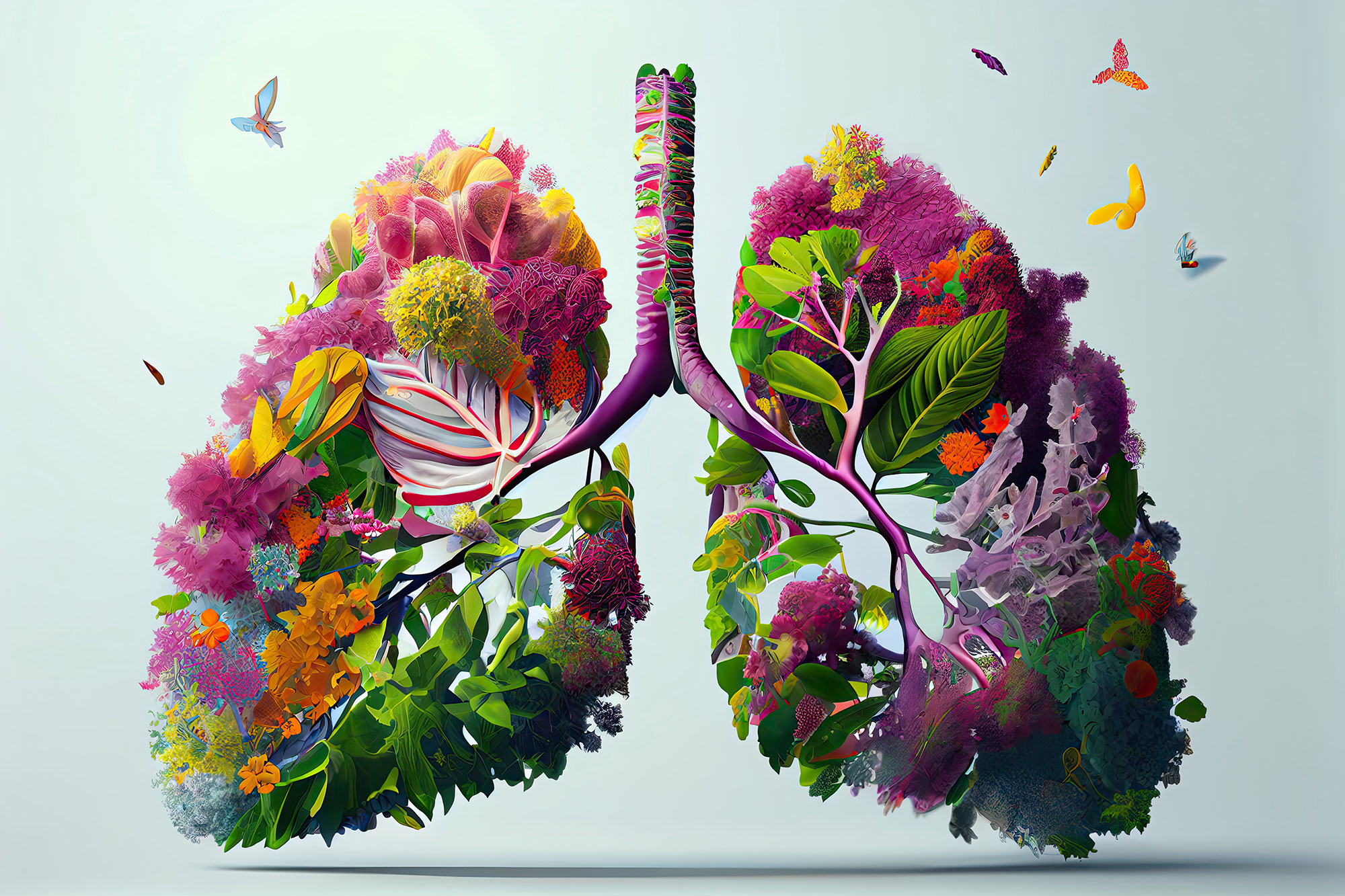Why our breathing is so important
On average, air flows in and out of our lungs 670 million times during our lifetime. As a rule, this happens completely automatically. We breathe about 25,000 times a day. Every breath has an impact on our blood pressure, our heart rate, our well-being and many other processes - in short, on our health.
Breathing is a complex process involving both the diaphragm and the muscles of the airway and chest. The diaphragm is a large, disc-shaped muscle that separates the chest from the abdomen. It is the main muscle of respiration and moves up and down during exhalation and inhalation. In addition, the diaphragm is an important muscle in interaction with the pelvic floor for the resilience of our musculoskeletal system.
Other muscles of the airway and chest are involved in breathing. The intercostal muscles, which run between the ribs, and the chest muscles help expand and contract the chest to allow air to flow in and out more easily.
Breathing is controlled both consciously and unconsciously. When we breathe consciously, we can specifically influence breathing and thereby achieve various effects.
Breathing exercises can help improve breathing and relax the body:
1. diaphragmatic breathing is a breathing technique in which we breathe deeply into the abdomen to lower the diaphragm. The lowered diaphragm creates pressure in our abdominal region, which leads to the activation of deep stabilizing muscles and can influence our posture.
2. nasal breathing: Inhale and exhale deeply through the nose while keeping the mouth closed. Focus on directing the breath into the abdomen and lowering the diaphragm.
Breathing: More than just oxygen uptake
1. mouths vs. nose
Nearly half of all people are chronic mouth breathers. Mouth breathing can have a negative impact on health status and is associated with fatigue and chronic stress.
The potential benefits of nasal breathing are based on different theories. Nasal breathing cleans, warms, humidifies, and exposes the air to different pressures than mouth breathing. These changes can increase oxygen uptake by approximately 10-15%. 1
2. less breathing
When we take fewer breaths per minute, we take in more carbon dioxide. Higher carbon dioxide levels in the body are associated with greater oxygen uptake. Oxygen molecules traveling in red blood cells want to get to parts of the body with a high carbon dioxide concentration. When oxygen molecules leave a person's bloodstream to travel to a tissue cell, a carbon dioxide molecule leaves the cell and travels up the bloodstream.
Optimal carbon dioxide content promotes optimal oxygen uptake.
3. respiratory rate
Deep, slow breathing can help lower blood pressure, slow the heart rate and relieve stress. When we are stressed, we often breathe shallower and faster. Conscious, deep breathing can help calm the body and relieve stress.
Deep breathing can also help improve lung capacity and increase oxygen levels in the blood. This can help reduce fatigue and improve physical performance.
In addition, breathing also has an effect on the nervous system. Deep, slow breathing can help lower the pulse and blood pressure.1 The parasympathetic nervous system, which is responsible for relaxation and regeneration, can be activated. Shallow, rapid breathing, on the other hand, can activate the sympathetic nervous system, promoting a state of stress and anxiety.
4. abdomen, breast, diaphragm
By breathing deep into our abdomen and lowering our diaphragm, we allow our lungs to take in more air and supply more oxygen to the blood. Shallow breathing limits the range of our diaphragms and lung capacity. For example, an average adult uses only 10% of their diaphragm. This breathing can lead to altered posture and dysfunction of the respiratory processes.
Breathing exercises that can help improve breathing and relax the body:
1.) 4-7-8 Breathing: Inhale through the nose and count to four. Hold your breath and count to seven. Then exhale through the mouth and count to eight. Repeat this exercise several times.
2) Kapalabhati breathing: Inhale through the nose and then exhale quickly and forcefully through the nose, pulling the belly button inward. Repeat this exercise several times.
---------------
1 Chang Q, Li C, Liu R, et al. GW28-e0786 Effects of slow breathing rate on blood pressure and heart rate variabilities in essential hypertension. J Am Coll Cardiol. 2017 Oct, 70 (16_Supplement) C139-C140.
 BOOK
BOOK
